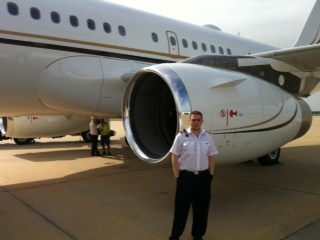Why Choose AeroStar for a Type Rating?
September 15, 2017
No Comments
Aerostar Training Services operates simulation training centers and provides aircraft type ratings, namely the Airbus A320 & the Boeing 737 Classic & NG versions. Aerostar ...
Read More
Why Every Pilot Needs an A320 Type Rating
September 15, 2017
No Comments
A type rating certification is the most important credentials a pilot should acquire if they want a career as an airline pilot. A type rating ...
Read More
Stories from Our Students and Graduates – First Officer Kenian Jabbour
September 15, 2017
No Comments
Graduate Stories: As the Admissions Director of AeroStar, I learn a lot about our students and their careers. The career path for pilots has changed ...
Read More
AeroStar Saving Lives One Upset Recovery Training at a Time
September 13, 2017
No Comments
Aircraft upset is a dangerous and potentially life-threatening condition in aircraft operations. It’s a situation in which the flight attitude or airspeed of an aircraft ...
Read More
AeroStar Saving Lives One Upset Recovery Training at a Time
January 20, 2016
No Comments
Aircraft upset is a dangerous and potentially life-threatening condition in aircraft operations. It’s a situation in which the flight attitude or airspeed of an aircraft ...
Read More
Sunny Skies Forecasted for B737 & A320 Family of Aircraft
September 29, 2015
No Comments
Boeing launched its 737 family of jets in 1964, and since then the company has snagged over 13,000 firm orders for the plane. Airbus launched ...
Read More
Do you have WIA or VA benefits?
July 13, 2015
No Comments
Did You Know? AeroStar Training Service is approved for WIA and VA benefits and programs in Kentucky and Central Florida! Contact us to find ...
Read More
RAA Convention Update – Future Pilot Career Outlook
June 17, 2015
No Comments
We recently returned from the RAA convention and are very encouraged about the prospects for pilots starting airline careers. The Regional Airlines (members of the ...
Read More
Airline Pilot Career Workshop – A Second Career for 55+ Pilots?
May 7, 2015
No Comments
Paula Williams – Fantastic. And Jim from Brazil says he was flying a B737. He’s a Hawker 400 captain now jet, jet transition instructor. Okay, ...
Read More
Pilot Jobs – Moving Back to the US from Overseas
May 7, 2015
No Comments
Paula Williams – Great. Robert from Oklahoma has, is looking at moving back to the US from overseas, he’s rated in the B737 and A320 ...
Read More



